Discovery of Lost Documents Leads to New Scholarship, Exhibition at Peabody Essex Museum
- SALEM, Massachusetts
- /
- September 15, 2014
At the dawn of the American Revolution in a city bustling with trade, politics and commerce, a craftsman of unusual ability was working tirelessly to create fine furniture for his wealthy patrons. Nathaniel Gould (1734–1781) established one of the region’s most sought-after workshops, producing thousands of technically sophisticated and aesthetically refined works for clients at home and for export. With an astute business sense, Gould thrived in one of the most tumultuous political and economic eras in American history. Despite all of this, until recently, Gould’s life and legacy was largely unknown. Masterworks sat in anonymity in the halls of major museum collections, unsigned by their maker and identified only vaguely by their geographic origin. In 2006, everything changed.
In the vaults of the Massachusetts Historical Society, among the records of Gould’s estate lawyer, researchers discovered documents that cast fresh light on -- and forever enhance our understanding of -- American furniture history. Three of Gould’s bound ledgers kept between 1758 and 1783 document in detail the production of almost 3,000 pieces of furniture in his Salem workshop. Painstaking analysis has revealed the identity, preferences and transactions of more than 500 of Gould’s patrons as well as the names of his journeymen and probable apprentices. This veritable data dump of information has led museums, antique collectors and the general public to examine their collections with fresh eyes and piqued interest. Works whose significance was obfuscated by the passage of time and lack of provenance are now being reconsidered and reappraised.
In Plain Sight: Discovering the Furniture of Nathaniel Gould -- on view at PEM from November 15, 2014, through March 1, 2015 -- is the first exhibition to definitively unpack this discovery and describe the signature characteristics of Gould’s work. In Plain Sight also invites exploration into the life, times and social mores of early America through the lens of one of the country’s earliest and most successful woodworkers. Stately desks, bombé chests and scalloped-top tea tables made of the finest imported mahogany are presented alongside paintings, archival materials, decorative arts and an interactive workbench and desk provide insight into the makers and consumers of 18th-century American design and culture. The exhibition is accompanied by an exquisite publication of photographs and detailed essays from PEM curators and principal researchers Kemble Widmer, Joyce King and Betsy Widmer.
“Possessing extraordinary woodworking skills and a refined sense of design, Gould created works that rank among the finest produced in 18th-century New England,” says Dean Lahikainen, PEM’s Carolyn and Peter Lynch Curator of American Decorative Art. “This jewellike exhibition celebrates the best of Gould’s furniture in a format that invites contextual exploration and rewards close looking.”
Gould's work is distinguished by its careful attention to graining, distinctive carved ball-and-claw feet, extended knee returns and superbly carved pinwheels and scallop seashells. Clients could choose from a range of design forms, including desks and chests of drawers, tables, chairs, beds and miscellaneous pieces, such as cradles, coffins and fire screens. Gould built his career on his ability to translate London’s latest designs -- sometimes gleaned from British pattern books, including Thomas Chippendale’s The Gentleman and Cabinet-Makers Director -- into a more conservative style that pleased the tastes of the region’s wealthy elite.
The Gould ledgers reveal a high percentage of domestic furniture produced to fill wedding orders, mostly from members of the merchant class. Within a highly competitive social environment, newlywed couples aspired (as they do today) to own status symbols that communicated the family’s wealth and social position.
At the time, Salem was the hub of coastal trade and, as the ever-wise businessman, Gould saw opportunity. His ledgers reveal 616 pieces of furniture that were sold in the Caribbean and of this inventory, 62 percent were desks, half of which were made of cedar -- an aromatic wood prized for its ability to deter insects in the semitropical regions. Gould’s participation in the export business also allowed him to become Salem’s principal importer of cedar and mahogany logs and allowed him to reserve the best pieces for his own magnificent workshop.











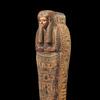


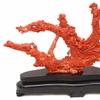
_Infinity_by_Santiago_Medina_PhotoCr100x100_c.jpg)


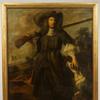

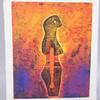
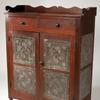


100x100_c.jpg)